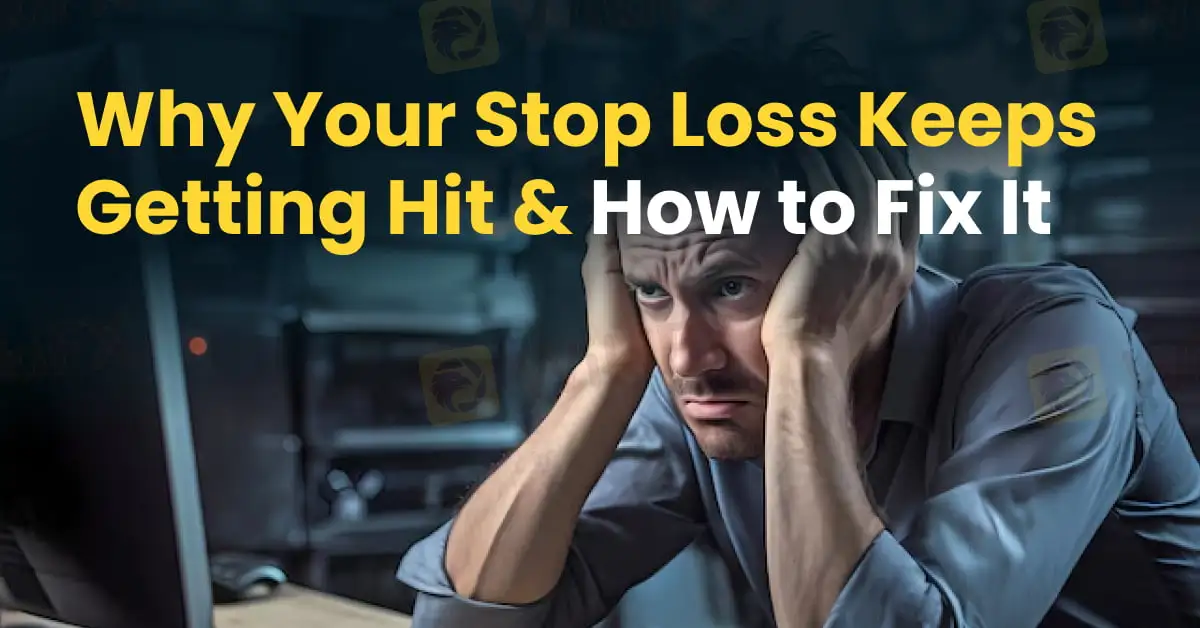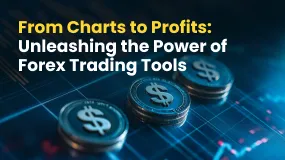Why Your Stop Loss Keeps Getting Hit & How to Fix It
Abstract:Many new traders run into the same frustrating problem. They analyse the market, place a trade, and watch the price go against them just enough to hit their stop loss. Then, like a bad joke, the price moves exactly in their predicted direction. Read this article to learn how to fix this issue for good!

Many new traders run into the same frustrating problem. They analyse the market, place a trade, and watch the price go against them just enough to hit their stop loss. Then, like a bad joke, the price moves exactly in their predicted direction. Sound familiar?
This isn‘t just bad luck but usually a sign that the trade wasn’t set up properly. While risk management is important, its not enough on its own. To avoid getting stopped out too early, traders need better timing and more accurate entry points.

Here are a few common reasons why stop losses get hit before the trade moves in the right direction:
- Entering Too Early
Many beginners are too eager. They jump into a trade before the market confirms their idea. That means the price might still move around and test levels before taking off, and your stop gets hit during that noise.
- Stop Loss Too Close to Price
A lot of traders place their stop loss too tight, just below a recent low or above a high. These are often spots the market retests before making a move, so its easy to get stopped out for no real reason.
- Not Considering Market Conditions
Markets don‘t move the same way all the time. What works during a strong trend won’t work in a sideways market. If you dont adjust your strategy, your stop loss may be in the wrong place.
- Chasing Risk-Reward Ratios
Aiming for a good risk-to-reward ratio like 1:2 sounds smart, but trying to force trades into this framework can lead to stop losses that dont fit the actual market behaviour.

The real purpose of a stop loss is to get you out when you‘re clearly wrong, not just to keep you “safe.” If your trade idea is still valid but your stop gets hit anyway, then the problem isn’t the stop loss. Its likely your entry was off.
To trade well, you need more than just a risk plan. You need to enter at the right place, with confirmation that your idea makes sense in that moment. Only then can a stop loss really work as intended.

To improve your results, try these simple but powerful steps:
Wait for confirmation. Dont enter just because you think the market will move; instead, look for signs that it already has.
Use bigger timeframes. They give clearer signals and help you avoid random price movements.
Put your stop where the trade truly fails. Dont just choose a number that feels “safe”, but make sure it marks the point where your idea would actually be wrong.
In short, trading is not just about being right. It‘s about being right at the right time and in the right place. That’s the key to making your stop loss work for you, not against you.

Read more

From Charts to Profits: Unleashing the Power of Forex Trading Tools
Want in-depth insights into the forex trading market so that you can make an informed investment call? Start unleashing the power of forex trading tools. These tools, comprising both fundamental analysis and technical charts, lay the foundation for successful forex outcomes.

EC Markets: A Closer Look at Its Licenses
When selecting a broker, understanding its regulatory standing is an important part of assessing overall reliability. For traders seeking to protect their capital, ensuring that a platform operates under recognised and stringent oversight can make all the difference. Keep reading to learn more about EC Markets and its licenses.

Capital.com: A Closer Look at Its Licenses
When selecting a broker, understanding its regulatory standing is an important part of assessing overall reliability. For traders seeking to protect their capital, ensuring that a platform operates under recognised and stringent oversight can make all the difference. Keep reading to learn more about Capital.com and its licenses.

Forex Success Stories: Lessons You Can Use to Win
There can be many ups and downs even for the world’s best forex traders. However, they remain undeterred in their vision to overcome the challenges that come their way. That’s why they form part of forex success stories that continue to inspire generations. One can inherit some lessons to be among successful currency traders. In this article, we will be sharing the lessons you can use to be successful in forex trading.
WikiFX Broker
Latest News
Forex Hedging Strategies - Calming You Amid Market Chaos
Key Events This Week: ISM, Trade Balance And More Earnings
What Is Forex Currency Trading? Explained Simply
A Beginner’s Guide to Trading Forex During News Releases
Ultima Markets enters the UK and gains the FCA license
LSEG Announces £1 Billion Share Buyback Program
SEC Lawsuit Targets Real Estate Fraud Scheme by Joseph Nantomah
XS.com Broker Partnership Expands Liquidity with Centroid Integration
ASIC Regulated Forex Brokers: Why Licensing Still Matters in 2025
FCA Publishes New Warning List! Check It Now to Stay Safe
Rate Calc
